Rotorua
We are in the city that
smells: Rotorua
- If you close your eyes and smell you will know where you are: Rotorua – as you can often smell the sulphur smell from all the thermal activity around here. We got told it is worse when the cold southerly wind comes in or when it soon rains. (And yes, sometimes you get those whiffs of smell) – some call it Rotten-Rua (I should mention I didn’t believe it, until we smelled it ourselves)
- It is another Maori name: Roto meaning lake and rua meaning two or second lake, as it was the 2nd greater lake, the chief discovered
- Already in the 1800s this was a tourist destination, when people came to marvel at the naturally formed pink and white terraces and it is the great southern Spa
- We are here in the Yellowstone area of the southern hemisphere
- Lake Rotorua is also inside an old volcano which formed by a major eruption around 240.000 years ago
- Lake Rotorua is also the 2nd largest lake on the North Island but with a mean depth of only 10 m, this makes it very prone to discoloration especially after windy weather
- 37% of the people living in this area are Maori - this is a Maori village with a pop of 200 – this town is literally built around steaming vents. It was the main Maori settlement in the area when the Europeans arrived
- St. Faith church from 1885 and a British-Maori mix, it was presented to the Maori people in appreciation of their loyalty to the Crown. It has a stained-glass window with a Christ figure who looks as it walks on the water of Lake Rotorua
- The graves here are raised because of the thermal activity below ground
Today we are checking out Rotorua
and a Steaming Parking lot was the starting point: as we drove in, we saw a big
parking area and even here we could see the steam coming out of the ground, we
stopped and walked along the edge and checked out the steaming vents as well
the one right in the middle of the parking lot (better don’t park on top of it)!!!
Maori Meetinghouses: Across
from here is a Maori Meeting house – it is one of the three we saw here nearly
all side by side – each one very unique with their carvings – they are all so
pretty.
St. Faiths Church: driving
over and first we saw a Maori Carving right near a steaming vent (yes) and the
Tama-te-Kapua Maori Meeting house from 1905, then there were several graves and
some had vents right at their corner. We walked around the church and checked
out the views over the lake and if you look to the sides you can always see
some steam (which makes us wonder if we would want to live near a steam vent –
By the way Gine read that only a few years back a new vent and mud pool opened
in someone’s backyard and that the house shook like an earthquake for a few
hours – not for me).
Maori in NZ compared to
First Nations in Canada:
- Both countries are settler states of Britain and have indigenous people, so what is different?
- The life expectancy of First Nations are 15 years lower than other Canadians – in NZ the Maori have a 7-year lower life expectancy
- Maori always had a greater share of the total population: there are 15% of Maori in NZ and 5% of First Nations in Canada: that gives them a better position for representation in government, dedicated TV and Radio channels, native language schools
- Maori have one common language: here in NZ nearly everywhere signs are in two languages: English and Maori
- The Maori had the treaty of Waitangi and demanded more of their rights and privileges
- Around 6 % of NZ is Maori land, and around 20 % of them live in poverty
- Canada has 3394 First Nations reserves and 50 % of all First Nations live on Reserve, often they live in poverty, have lack of housing, access to education and health care – some of them are have self-government
Rotorua Lakefront Boardwalk
This was our next spot, a super
pretty boardwalk along the lake with lots of benches and as well some nice
Maori sculptures and nice views – it is not super spectacular, but nice and
relaxing!!!
It steams at Kuirua Park:
- It is a public park in a geothermal active area, new eruption are occuring from time to time like in 2001 when mud and rocks the size of footballs were suddenly hurled into the air as a new steam announced its arrival
- Did you know there are alkaline chloride ones and acid sulphuric ones??? Alkaline chloride is clear and comes fast to the surface under pressure and around the vents you can see the Silka deposits, today there is more bicarbonate and less silca so the silca deposits are not growing here
- Lake Kuirau (Hot pool) was once cool enough that you could bath in it: as per legend Kuirau a Maori woman came here to swim, her husband said that the lake belonged to her. But a large Tanwiha lived in the lake he watched the girl and one day rose up and took her and she was never seen again: the gods were so angry they made the lake boil to get rid or Tanwiha. From then on the Lake was called Kuirua in memory of the beautiful lady.
This is is another highlight: we
parked and then already discovered some small steam vents – nice with fences
around them – a few didn’t steam anymore or only a little and others steamed a
lot. As we walked around them, we came to the foot baths: yes – they have two
free foot baths, we were sitting down and put our feet into the hot water (now
that would be perfect in the evening when we have cold feet). It was nice and
relaxing and we met a couple from Austria who is also travelling around the
north Island. After all the relaxing we went around one of the thermal lakes:
which is super green!!!! As where the other one is brownish-green – over a cute
little bridge – and as we are in a park there are some super cute flowerbeds
and we ended up at some Mud pools (even they only had smaller blurbs).
Next we came to a volcano geyser –
where they had huge stones piled up with the steam coming out at the top.
Hot pool: this was super amazing
it is like a huge lake and it steams a lot – there are a few viewing platforms
and bridges and sometimes you can’t see anything as the steam surrounds you
like a thick fog – and sometimes you can see the white wood in the lake with
its colored edges and sometimes all is a mystery: it is like you are on another
planet totally surreal. At one spot there was a boardwalk which we couldn’t
walk as they blocked it off, looks like the boiling lake took over it…. And the
colors with the bight blue – white and orange are amazing.
The Government gardens
- The Rotorua Museum built in faux-Tudor style started in 1908 as an elegant spa retreat called the bath house and is closed since 2016 because of Earth quake damage. They say it is one of NZ’s most photographed buildings
We drove through an amazing iron
gate – wow!!! And then were lucky as we found a parking spot when nearly all of
them were taken. First, we checked out the Klammath Falls Rose Garden, came by
a War Memorial surrounded by cool Maori carvings and the gardener’s cottage (a
super cute little house) to have a great view on the old Bath house – what an
amazing building. We discovered a lot of super cool little flower areas and
ponds, a cute pavilion, a lake with a fountain and checked it all out and
admired it.
At the end of the Peninsula
Whangapiro:
- The Maori called this small peninsula Whangapiro “evil-smelling place” (yes it smells), the sulphur bubbles and smells right here along the shore
Ok, so Gine thought we will have a
nice view what we did had was a bird’s paradise – all kind of birds were here
from pigeons, ducks, black swans, Australian Magpies and Cormorants… and I’m
sure lots more – they were super noisy and super fun to watch. Another
attraction was the old ship sitting there (I don’t think it does any more lake
cruises). It was a lot of fun (oh and a lot of flies were around here – which we
didn’t enjoy!!!).
Sulphur Point
- Sulphur Bay is at the southern end of Lake Rotorua, and is another geothermal area with Silca flats and sulphur edges near mud pools and steaming vents
- The water has a milky color because of the Sulphur particle suspended in the water
- Because of the warmth it attracts a lot of birds
Gine walked partly back along
Sulphur point and we stopped at some point to have a better look at the milky
weird looking water – which is so unusual.
I may should mention that it is by
now 2.30 and we are walking and exploring for over 4.5 hours – time to go
shopping and take a coffee break!!!!
With the WWII Landing craft at
the Blue lake:
Today we went back for some relax
time at the blue lake – we did actually went into the water which is cold
(nearly like at home) and once we came out we saw this super cool land &
water machine driving into the lake – what!!!! Yes –when it came out, we
checked it out and then later went on the internet to check out this WWII Duck
Landing craft – super cool, and it is a real one. Did I mention that it is hot
today – perfect for us having a nice cold cut supper.
Duck – the WWII Landing
Craft:
- The Duck (officially DUKW) is a WWII vehicle which got designed in collaboration with GMC to supply troops and bring back the wounded: they would load them up, drive on the supply ship and then right up to the shore for the troops. Later they were also used for troop landings and it played an important role in the Normandy landing
- Those amazing vehicles can drive on land and then right into the water
- Why did they come up with this idea: because it was so hard to supply the troops on enemy soil, the big supply ships couldn’t go ashore and it was a lot of work to load all in small boats and bring it over then unload them and put them on trucks to take to the troops
- The Military Generals approached a young yacht designer Rod Stevens and asked him to built something that could leave the supply ship and go all the way to the troops: it got designed, built and presented to the US Military in 38 days. But then the US Generals didn’t like it and they were not convinced the 7 tonnes vehicle would work. Before they could show it in a sea trail that it works, a large storm occurred of the shores of Massachusetts the local coast guard got stranded on a sand bank with 7 crew members – they jumped into their DUKW and went out to rescue the stranded men. The media was all over the “floating truck that saved the coast guard” – and then suddenly the US Generals decided the DUKW are a great idea.
- Around 21.000 Ducks got built from 1942-44, it is estimated that today are still around a thousand of them, mostly in America, Britain, Australia and Asia. Two of them in NZ here in Rotorua and are driving onto the lake
- They still do rescue today – one of the Ducks was used during a flood in Rotorua

 Rotorua, Bay of Plenty, New Zealand
Rotorua, Bay of Plenty, New Zealand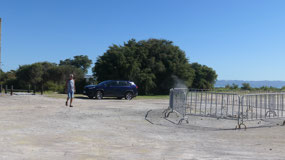
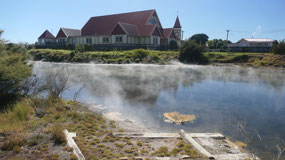


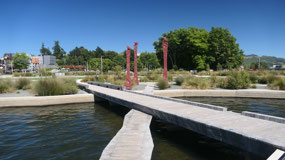
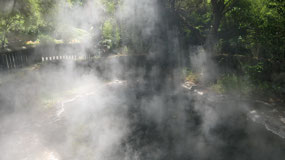
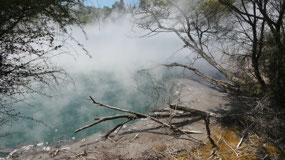
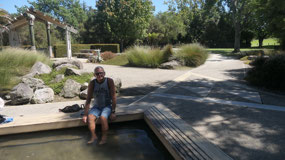
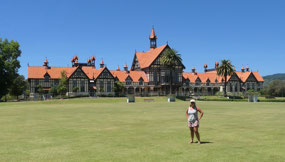
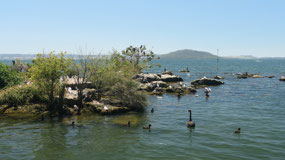
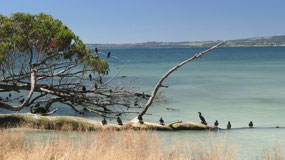
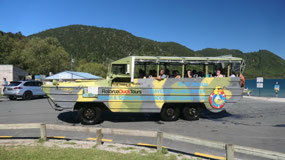



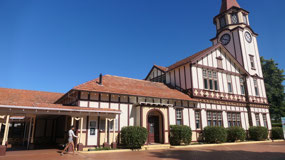
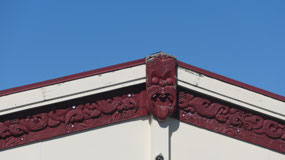
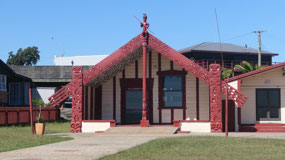
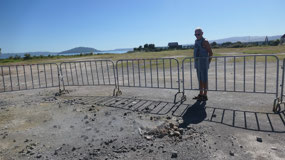
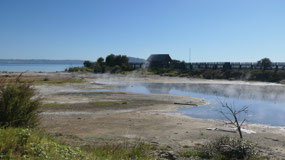
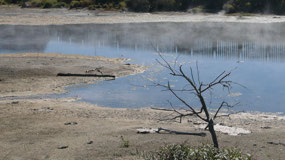
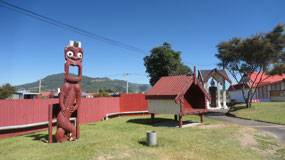
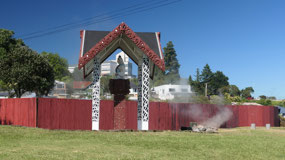
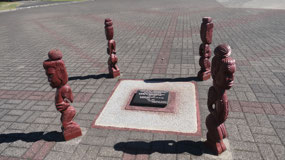
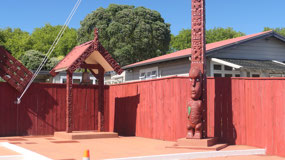
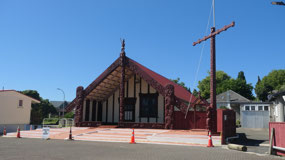
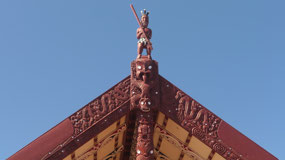
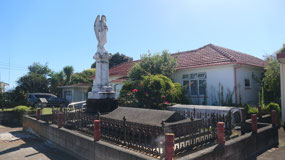

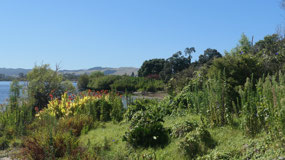
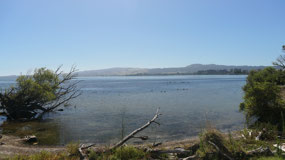
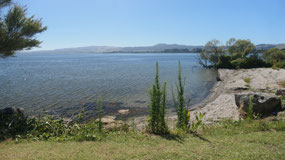
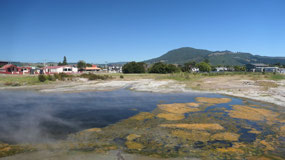
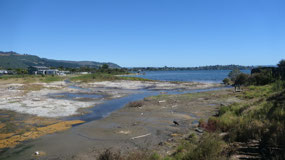
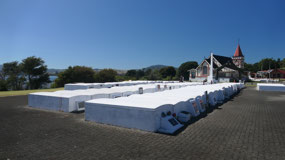
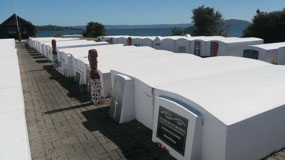
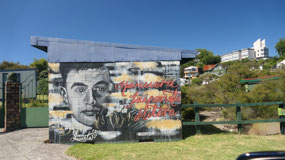
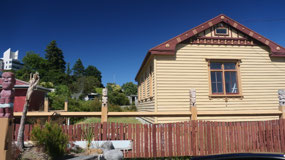

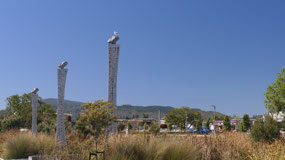
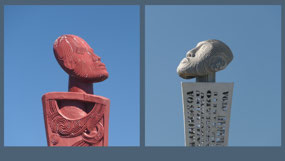
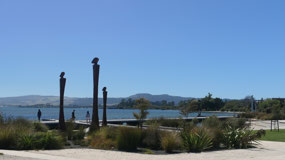
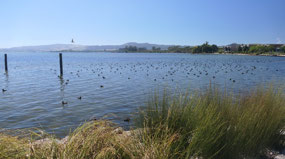
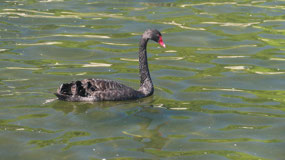
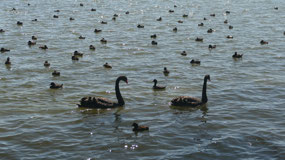
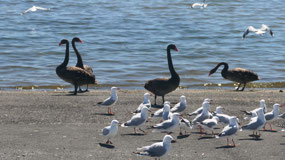
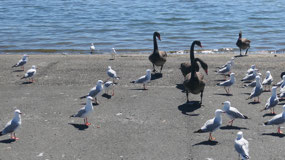
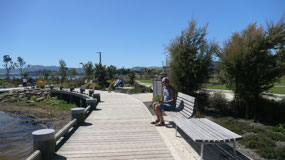
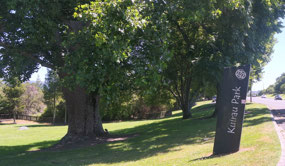


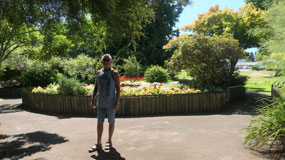
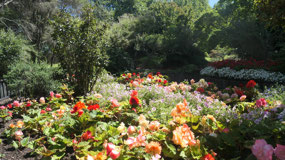
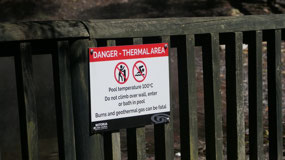

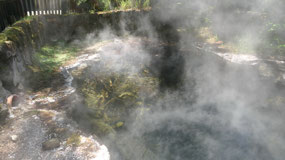
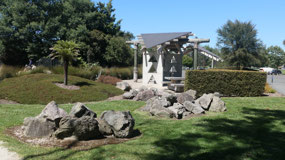
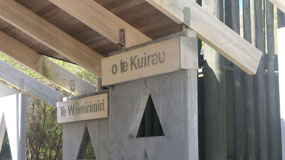
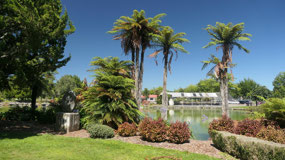
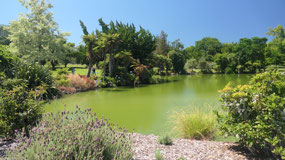
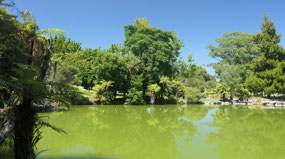
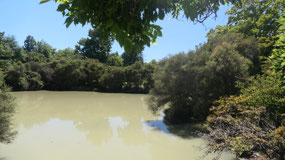
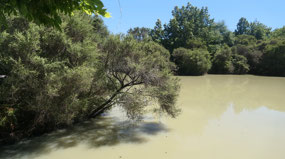
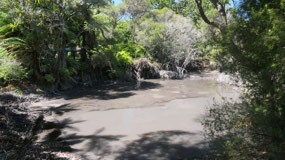
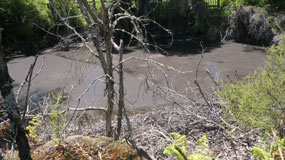
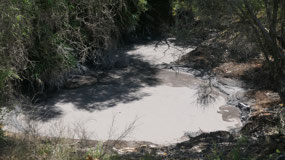

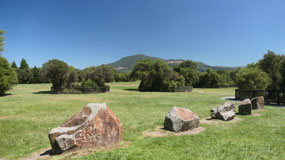

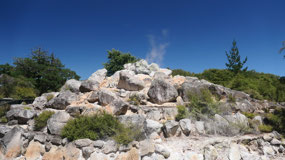
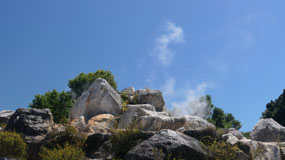
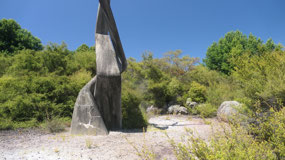
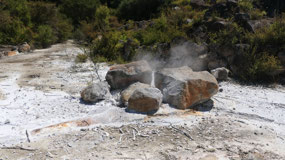

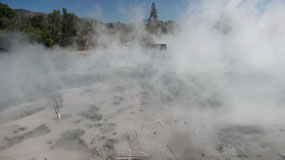
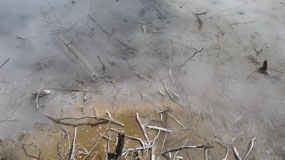
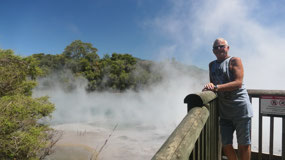
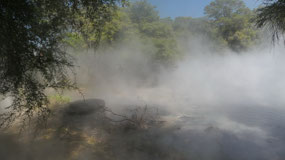
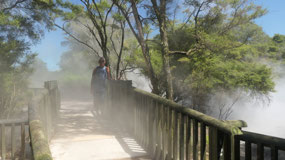
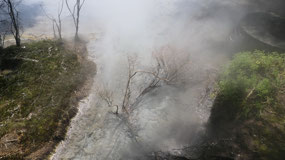
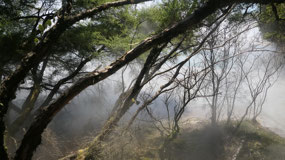
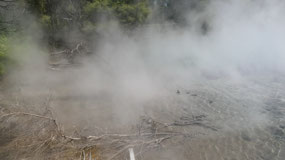
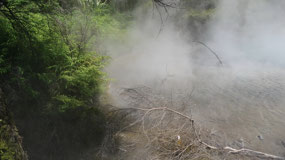
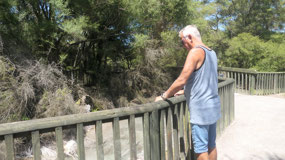
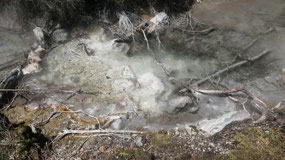
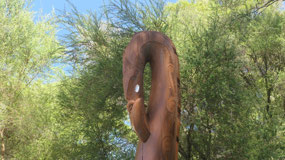
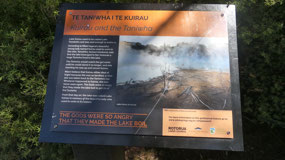
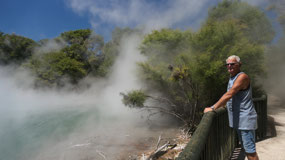
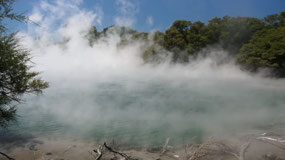
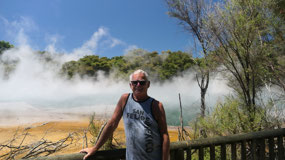
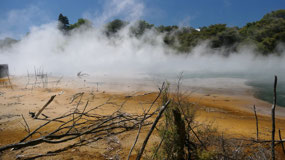
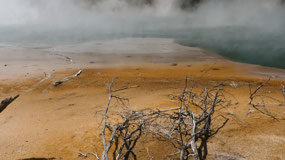
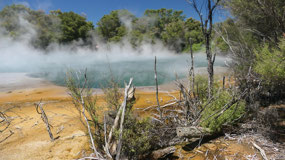
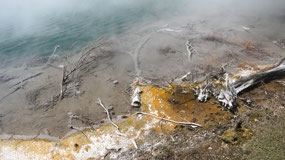
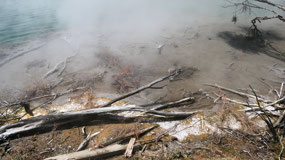
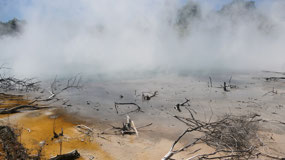
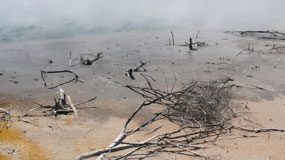
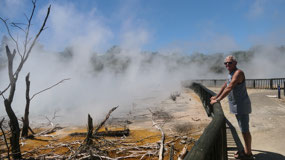
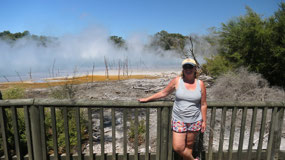
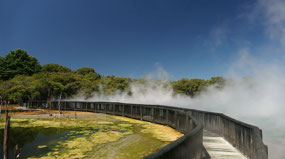
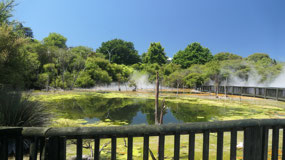
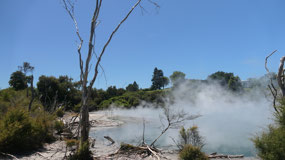
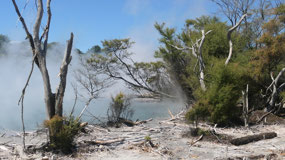
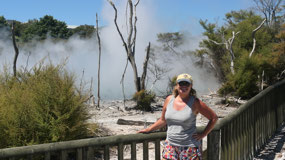
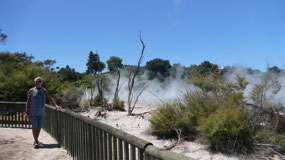
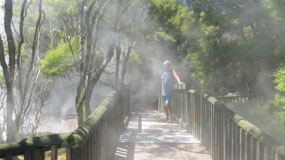
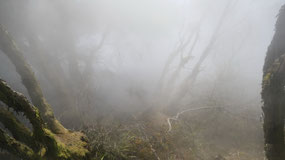
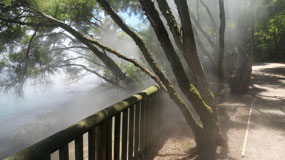
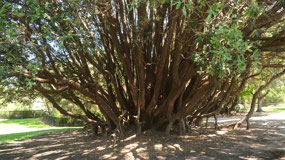
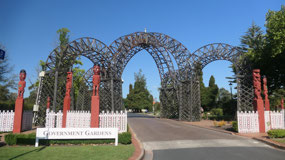
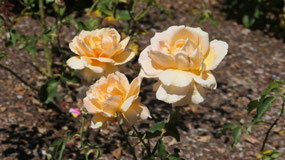
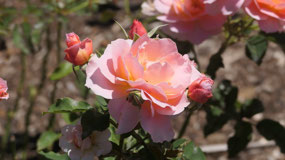
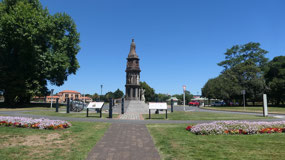
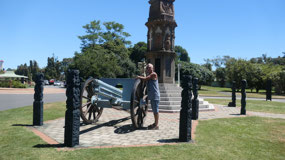
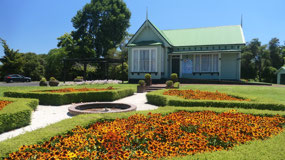
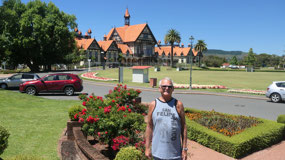
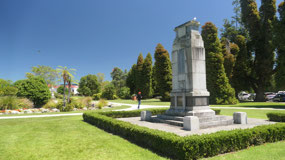
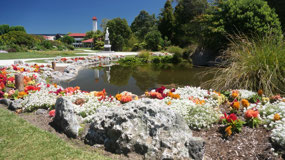
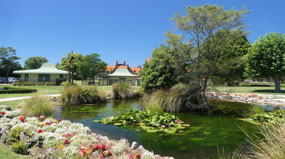
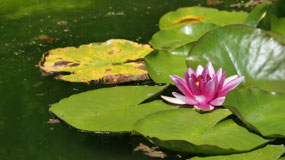
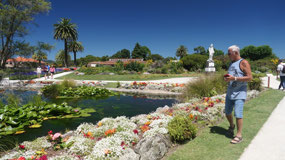
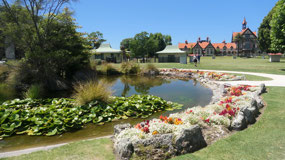

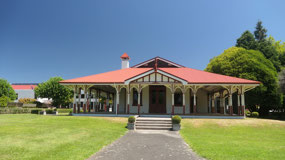
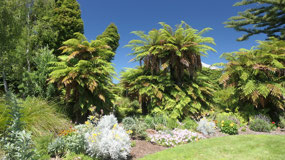
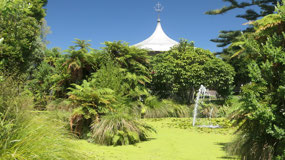
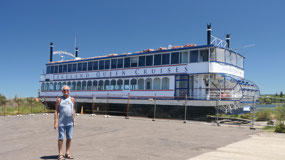
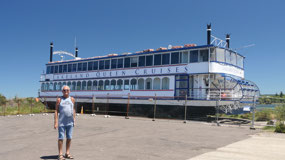
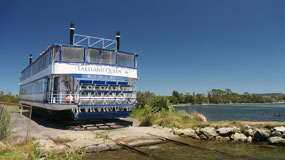
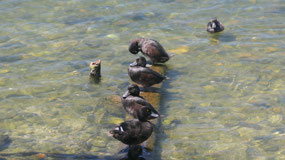
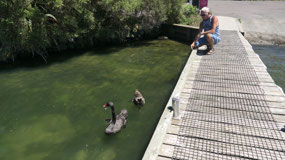
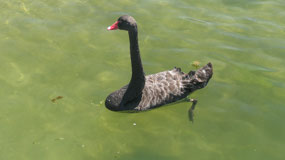
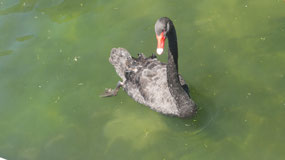
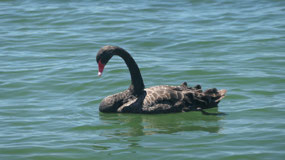
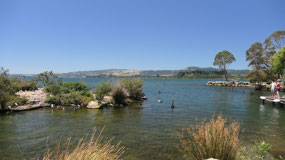

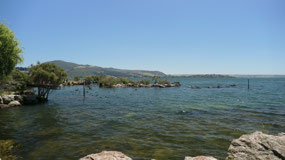
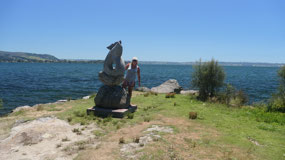
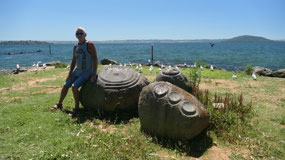
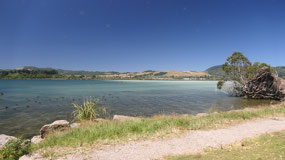
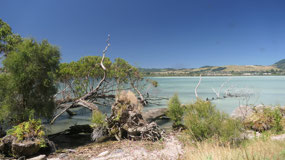
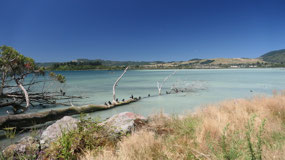
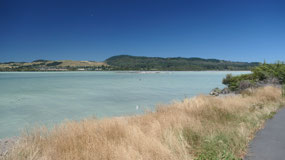
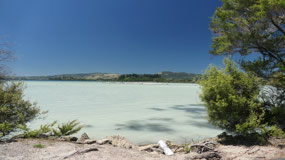
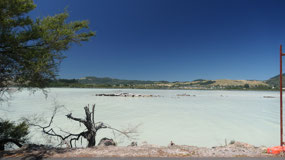
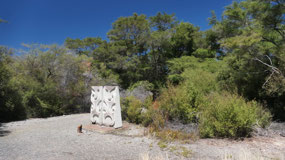
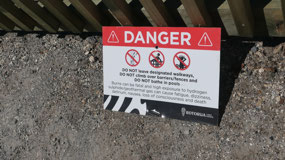
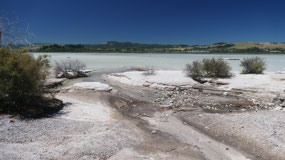

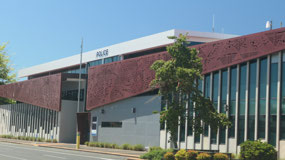
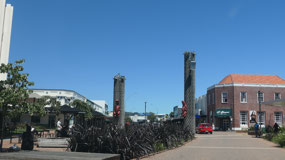
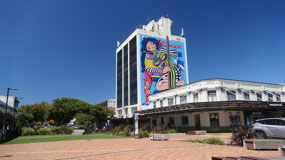

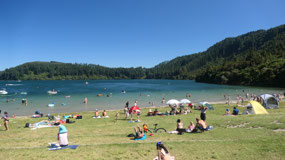
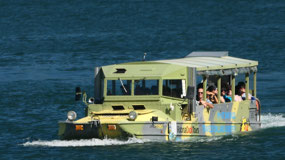
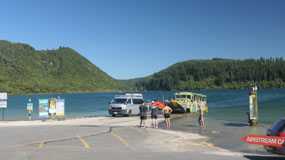
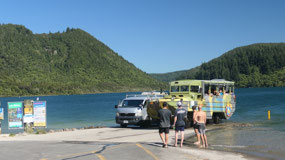
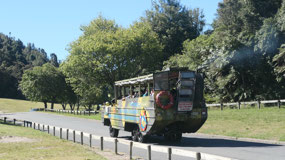
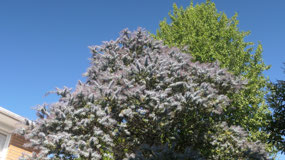
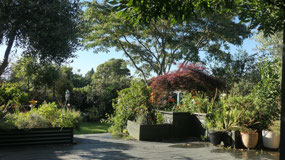
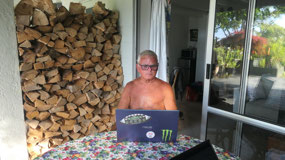
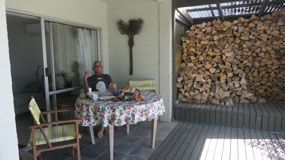
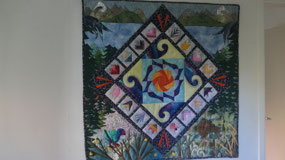
2025-05-23